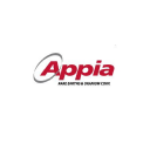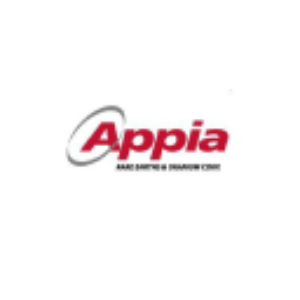Welcome to our dedicated page for Appia Rare Earths & Uranium news (Ticker: APAAF), a resource for investors and traders seeking the latest updates and insights on Appia Rare Earths & Uranium stock.
Appia Rare Earths & Uranium Corp. (APAAF) is a Canadian mineral exploration company focused on discovering high-grade uranium and rare earth element deposits in strategic regions including Saskatchewan and Brazil. This page provides investors and stakeholders with timely updates on corporate developments, exploration progress, and regulatory filings.
Access consolidated, verified information about Appia’s activities, including drilling results, partnership announcements, and technical reports. The curated news feed ensures you stay informed on critical updates without navigating multiple sources.
Key coverage of Appia’s exploration programs, such as geophysical surveys in the Athabasca Basin and ionic adsorption clay projects in Goiás, is maintained here. Content spans earnings releases, resource estimates, and operational milestones, all sourced directly from the company and reputable industry publications.
Bookmark this page for streamlined access to Appia’s latest developments. Check back regularly for authoritative updates on uranium and rare earth exploration efforts driving the clean energy transition.
Appia Rare Earths & Uranium Corp. (APAAF) has appointed Peter J. Cashin to its Board of Directors, filling the vacancy left by the passing of Thomas Skimming. Cashin brings over 40 years of experience in mining exploration and development, currently operating Apex Mineral Consultants Inc. His notable achievements include founding Imperial Mining Group Ltd. and Quest Rare Minerals Ltd., where he led the discovery of the Strange Lake B-Zone rare earth deposit in Quebec - the largest deposit of its type outside China. This discovery earned him the Quebec Prospector of the Year Award in 2010. Cashin holds a B.Sc. in Geology from the University of New Brunswick and an M.Sc. in Mineral Exploration from McGill University. He has been granted 500,000 stock options at $0.15 per share, exercisable over five years.
Appia Rare Earths & Uranium Corp (CSE: API) (OTCQB: APAAF) announced that Stephen Burega is departing from his position as President of the company, effective immediately. Burega, who served as President since January 2023, is leaving to focus on his role as CEO and President of Romios Gold Resources Inc. and other ventures.
Tom Drivas has been appointed as Interim President while the company begins its search for a permanent replacement. Burega has agreed to assist in facilitating the company's ongoing operations and the transition of his responsibilities to the new President.
Appia Rare Earths & Uranium Corp (CSE: API) (OTCQB: APAAF) has announced exceptional overlimit assay results from its diamond drilling program at the PCH project in Goias, Brazil. The program revealed significant Total Rare Earth Oxide (TREO), Niobium Oxide, and Phosphate Oxide mineralization.
Key drilling results include:
- PCH-DDH-002: 150m@ 1.34% TREO, 0.13% Nb2O5 from surface
- PCH-DDH-003: 147m@ 2.00% TREO, 0.23% Nb2O5 from surface
- PCH-DDH-004: 153m@ 1.32% TREO, 0.20% Nb2O5 from surface
The results show a 19% increase in average TREO grades and 23% increase in average Niobium grades compared to original values. The PCH project features two distinct mineralization styles: Ionic Adsorption Clay (IAC) and hard rock carbonatitic breccia. All three drill holes ended in mineralization, suggesting potential for extension.
Appia Rare Earths & Uranium Corp (CSE: API) (OTCQB: APAAF) has announced its participation in the 2025 PDAC Convention at the Metro Toronto Convention Centre from March 2-5, 2025. The company will be located at booth #2715 in the Investors Exchange.
Recent highlights include promising results from the Taygeta and Merope targets, showing NdPr desorption averages of 35.0% to 60.1% and DyTb desorption of 37.3% to 43.9%. The company's PCH project in Brazil revealed significant drilling results:
- PCH-DDH-002: 150m@1.14% TREO, 0.12% Nb2O5, 2.76% P2O5
- PCH-DDH-003: 147.7m@1.69% TREO, 0.18% Nb2O5, 3.26% P2O5
- PCH-DDH-004: 153m@1.08% TREO, 0.15% Nb2O5, 2.31% P2O5
Additionally, the company identified multiple high-priority drill targets at its Otherside property in the Athabasca Basin, Saskatchewan, featuring geophysical signatures similar to NexGen's Arrow and Paladin Energy's Triple R deposits.
Appia Rare Earths & Uranium Corp. (APAAF) has identified multiple high-priority drill targets at its Otherside property in the Athabasca Basin, Saskatchewan, following an Airborne Gravity Gradiometer and Magnetometer Survey. The targets show geophysical signatures similar to NexGen Energy's 'Arrow' and Paladin Energy's 'Triple R' high-grade uranium deposits.
Key findings include promising geophysical anomalies associated with gravity lows, magnetic lows, and a 49 km-long electromagnetic conductor with variable offsets and bends, which are important indicators for potential uranium mineralization. The company's 2025 exploration program will include advanced 3D processing and potential ground geophysical surveys to refine drill target locations.
The exploration will be conducted in collaboration with the Fond du Lac First Nations for local accommodations and crew staffing. The property's structural complexities, including shear zones, faults, and reactivations, are considered essential features for uranium deposition.
Appia Rare Earths & Uranium Corp. (APAAF) has announced updated results from four Ionic Adsorption Clay (IAC) rare earth elements targets at its PCH project in Brazil. The testing of 1,173 samples from 163 Auger drillholes confirmed extensive IAC mineralization with excellent desorption rates of critical Magnet Rare Earth Oxides (MREO).
Key results include:
- Taygeta Target: 33.8% Total Rare Earth Oxides (TREO), 60.1% NdPr recovery
- Merope Target: 29.0% TREO, 35.0% NdPr recovery
- Maia Target: 34.0% TREO, 69.0% NdPr recovery
- Electra Target: 11.3% TREO, 15.1% NdPr recovery
The company plans additional drilling to further define key target zones and update the current Mineral Resource Estimate while preparing for a Preliminary Economic Assessment report.
Appia Rare Earths & Uranium Corp (APAAF) has announced exceptional results from its diamond drilling program at the PCH project in Goias, Brazil. The program revealed significant Total Rare Earth Oxide (TREO), Niobium Oxide, and Phosphate Oxide concentrations in three drillholes from a brecciated carbonatite intrusion.
Key findings include:
- PCH-DDH-002: 150m@1.14% TREO from surface
- PCH-DDH-003: 147.7m@1.69% TREO from surface
- PCH-DDH-004: 153m@1.08% TREO from surface
All three drillholes ended in mineralization, suggesting potential for extension. The discovery indicates the presence of high-grade carbonatitic style rare earths in addition to Ionic Adsorption Clay deposits. The project benefits from favorable location with easy access to road and power infrastructure.
Appia Rare Earths & Uranium Corp. (CSE: API) has announced a non-brokered private placement offering of up to 4,166,666 flow-through units at $0.12 per unit, aiming to raise up to $500,000. Each unit includes one flow-through common share and one warrant, with warrants exercisable at $0.15 for one year. The offering is scheduled to close on December 31, 2024.
Eligible finders will receive a 6% cash commission and broker warrants equal to 6% of placed units. The proceeds will be used for Canadian Exploration Expenses qualifying as flow-through critical mineral mining expenditures on the company's Saskatchewan properties. These expenses will be eligible for the critical mineral exploration tax credit.


